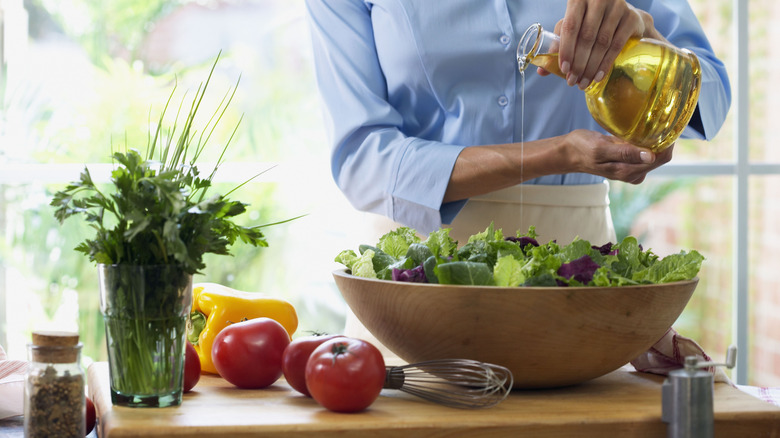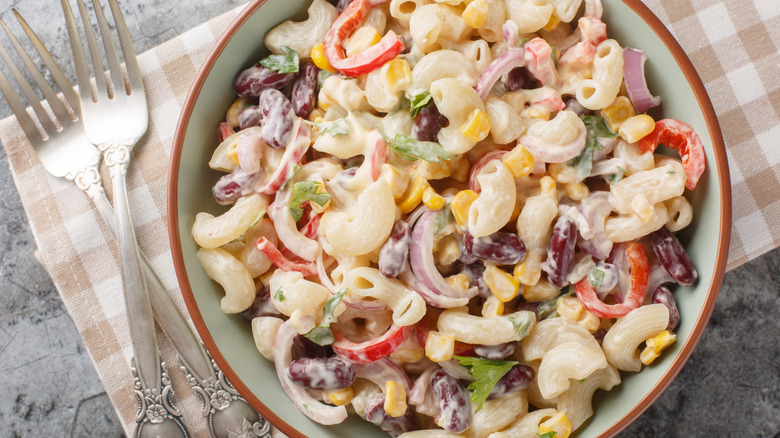Why You Don't Need Lettuce To Make A Salad
What is a salad? This seems like a simple question you might have been asked by your kindergarten teacher, and back then — or perhaps even now — you might answer with something along the lines of "lettuce and other vegetables topped with dressing." You would not be wrong, since the combination you describe fits the traditional definition of salad. Indeed, the listing in Dictionary.com describes a salad as "a usually cold dish consisting of vegetables ... covered with a dressing and sometimes containing seafood, meat, or eggs." However this doesn't tell the whole story, as there's a second definition that extends beyond lettuce or even vegetables. That same source also notes that a salad can be "any of various dishes consisting of foods, as meat, seafood, eggs, pasta, or fruit ... usually cut up, mixed with a dressing, and served cold."
alads date back to the first century and were made primarily of raw vegetables with an oil and vinegar dressing and a sprinkling of salt. (In fact, the word "salad" comes from the Latin salāre, which means "to salt [something].") These were typically served before the main course, which is a practice still carried out in many restaurants today. It has its origins in the Greek physician Hippocrates — who also gave us the Hippocratic oath — who felt that vegetables were considered easy to digest and should always be consumed prior to the entree. Non-vegetable mixtures, however, seem to be latecomers to the salad pantheon. Ones made with mayonnaise, in particular, wouldn't be in vogue for another 1800 years or so.
These salads are all lettuce-free
There are many ways you can make a salad without lettuce or any other greens. Some of these salads still involve vegetables, such as a classic caprese salad made of tomatoes, basil, and mozzarella. Bean salads with dried beans or green beans might fit into this category, as would potato salad, unless you make our German gnocchi potato salad — the easiest-to-make potato salad of your life, but which tips into pasta salad territory
Pasta salad need not contain any vegetables at all, or they could be added to provide bulk, like the coleslaw mix in a Midwestern ramen noodle salad, or crunch (the carrots and celery in Hawaiian macaroni salad). This is also the case for fruit salads or protein-based bound salads, since egg salads are pretty light on vegetables, as are many tuna and chicken salads.
Oh, and let's not forget Jell-O salads, which are made from just about anything under the sun. You could make an entire dinner out of these: a savory Jell-O mold with krab ribbon loaf as the main course, port-poached pear seafoam salad (the culinary comeback of the year, in case you're wondering) and the Chicago Thanksgiving spread favorite Watergate salad (aka "green stuff") on the side, and a sweet strawberry pretzel salad — not legally a salad, but whatever — for dessert. Perhaps not just what Dr. Hippocrates ordered, but it would make for a fun retro meal.

